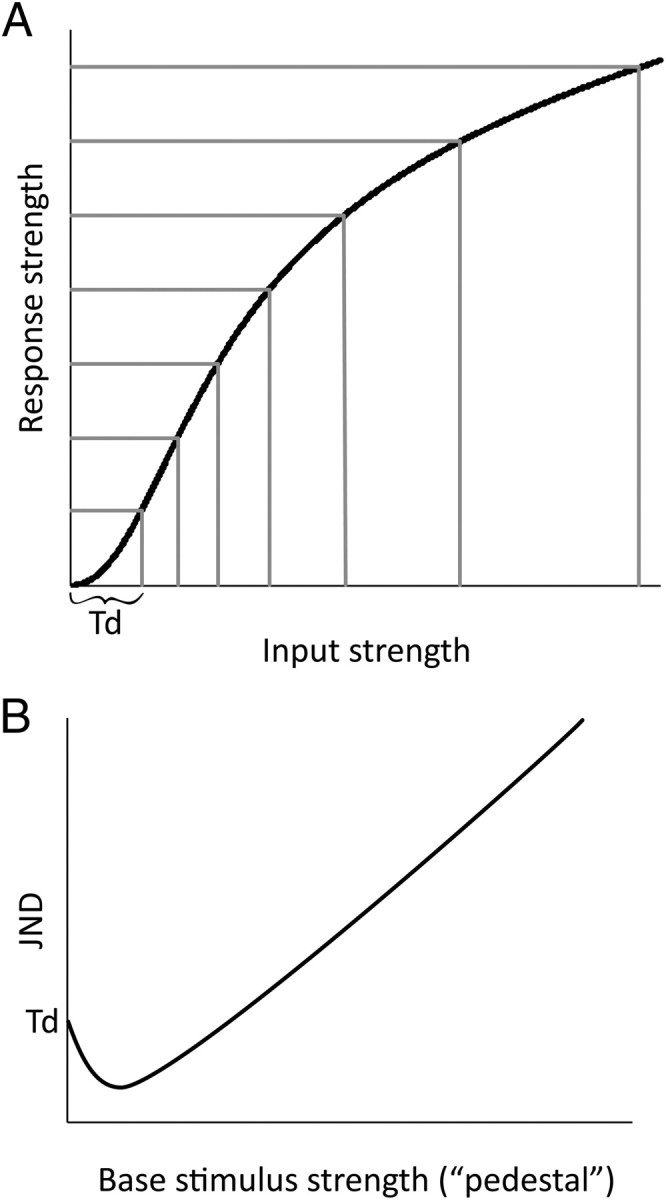Figure 3.

A illustrates a nonlinear relationship between input strength (stimulation intensity) and response strength in a sensory system. The horizontal gridlines mark the smallest resolvable units of response strength (that are perceptually discriminable); the spacing between the vertical gridlines shows the smallest detectable change in input strength (the JND). Td marks the minimum detectable input strength (the absolute detection threshold). Psychophysical evidence that the relationship between sensory input and response strength follows a sigmoid function, as shown here, comes from demonstrations that the JND between two stimuli decreases as their base strength increases, when the base strength is small (close to Td), but beyond this point the JND increases as the base strength increases, as described by Weber's Law (Solomon, 2009). The biphasic nature of this change in JND as a function of base stimulus strength produces a dipper function, as shown in B.
